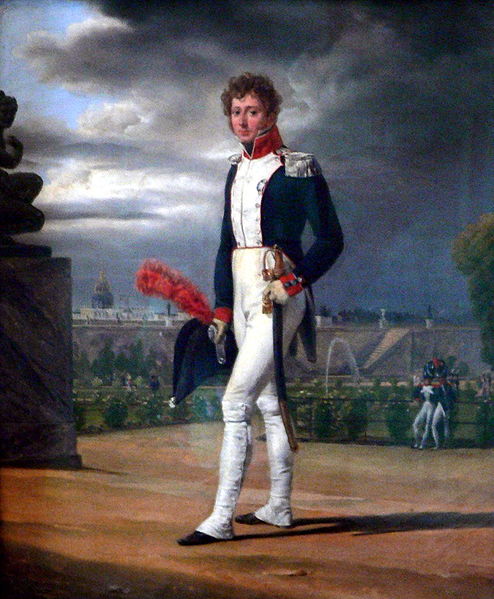|
|||
|
Philatelia.Net / French revolution / Plots / The directory «Plots»National Gaurd foundedThe National Guard (French: la Garde nationale) was the name given at the time of the French Revolution to the militias formed in each city, in imitation of the National Guard created in Paris. It was a military force separate from the regular army. Initially under the command of the Marquis de Lafayette, then briefly under the Marquis de Mandat, it was strongly identified until the summer of 1792 with the middle class and its support for constitutional monarchy. The National Guard had some impact on the Revolution, but was disarmed by Napoleon except for its recall in 1809 and 1814 to help defend France. Reestablished after his exile, it continued to play a significant role in each French Revolution of the 19th century. With disorder and theft spreading in Paris, the citizens of the city met and agreed to create a militia made up of the middle-class to ensure the maintenance of law and order and the defence of the Constitution. La Fayette was elected to the post of commander in chief of the militia on July 15, and it was named the National Guard. Each city of France set up its own National Guard. The officers of the National Guard were elected. Under the law of October 14, 1791, all active citizens and their children over 18 years were obliged to join the National Guard. Their role was the maintenance of law and order and, if necessary, the defence of the territory. The citizens kept their weapons and their uniforms at home, and set forth with them when required. At the beginning of Revolution, the National Guards wore blue uniforms because the king wore blue. The former Guet royal had held responsibility for the maintenance of law and order in Paris from 1254 to 1791, when the National Guard took over this role. In fact, the last commander of the Guet royal (Chevalier du Guet), de La Rothière, was elected to head the National Guard in 1791. In the summer of 1792, the fundamental character of the guard changed. The fédérés were admitted to the guard and the subsequent takeover of the guard by Antoine Joseph Santerre when Mandat was murdered in the first hours of the insurrection of the 10 August placed a radical revolutionary at the head of the Guard. After the abolition of the monarchy (September 21, 1792), the National Guard fought for the Revolution and it had an important role in forcing the wishes of the capital on the French National Assembly which was obliged to give way in front of the force of the "patriotic" bayonets. After 9 Thermidor, year II (July 27, 1794), the new government of the Thermidorian Reaction placed the National Guard under the control of royalists. The National Guard then attempted to overthrow the Directory during the royalist insurrection on the 13 Vendémiaire, year IV (October 5, 1795), but it was defeated by forces led by Napoleon Bonaparte in the Battle of 13 Vendémiaire. Thereafter, it was disarmed. Napoleon did not believe that the middle-class National Guard would be able to maintain order and suppress riots. Therefore he created a Municipal Guard of Paris, which was strongly militarised. However, he did not abolish the National Guard, but was content to disarm it. He kept it in reserve and he mobilised it for the defence of French territory in 1809 and 1814. Twenty thousand national guardsmen took part in the Battle of Paris in 1814. Under the Restoration in 1814, the National Guard was maintained by Louis XVIII. But the middle-class men who composed it expressed a degree of hostility to the reactionary monarchy, and Charles X dissolved it in 1827. But he neglected to disarm it, and its rifles resurfaced in 1830 during the July Revolution. Central African Republic, 1989, General Carnot Comoren Islands, 1989, General Kellerman and Battle of Valmy France, 1991, Mounted gendarme Gabon, 1989, Soldier and Sans-culotte Ghana, 1989, Regiment standart, 1789, French infantry-man Ghana, 1989, Revolutionary standart, 1789, and pistol Guinea Bissau, 1989, An Officer swears Alligeance to the Constitution Lesotho, 1989, National Guard Maldives, 1990, An Officer swears Alligeance to the Constitution Sierra Leone, 1989, Revolutionaries in Paris France, 1991.06.01, France, 2004, Advertising: |
|||
© 2003-2024 Dmitry Karasyuk. Idea, preparation, drawing up
|

